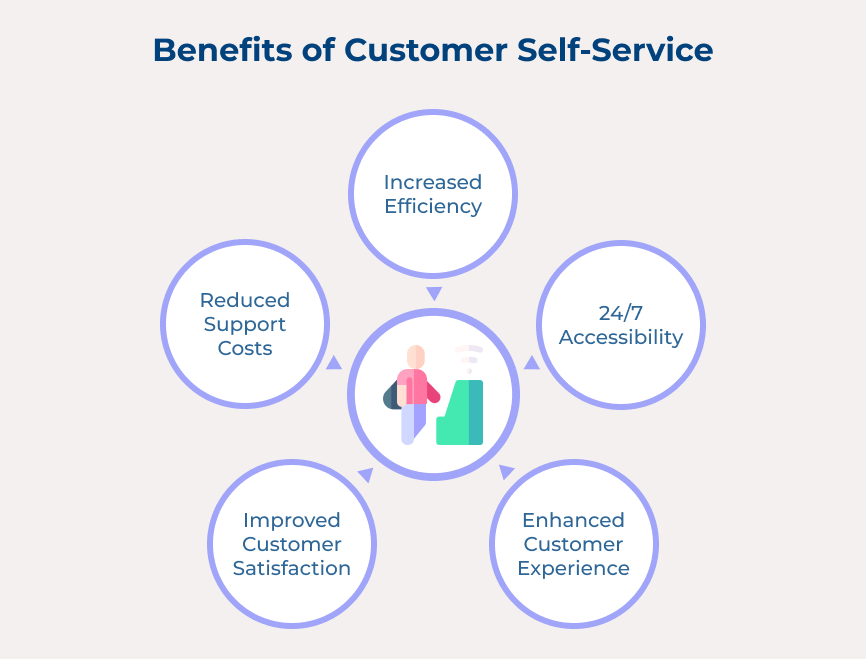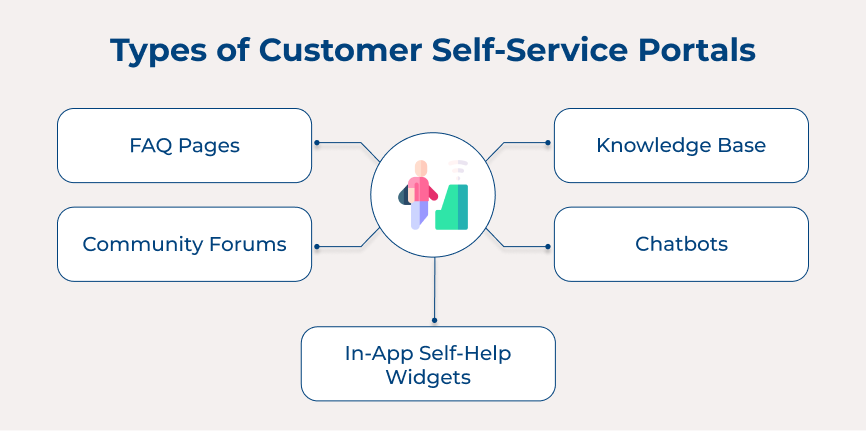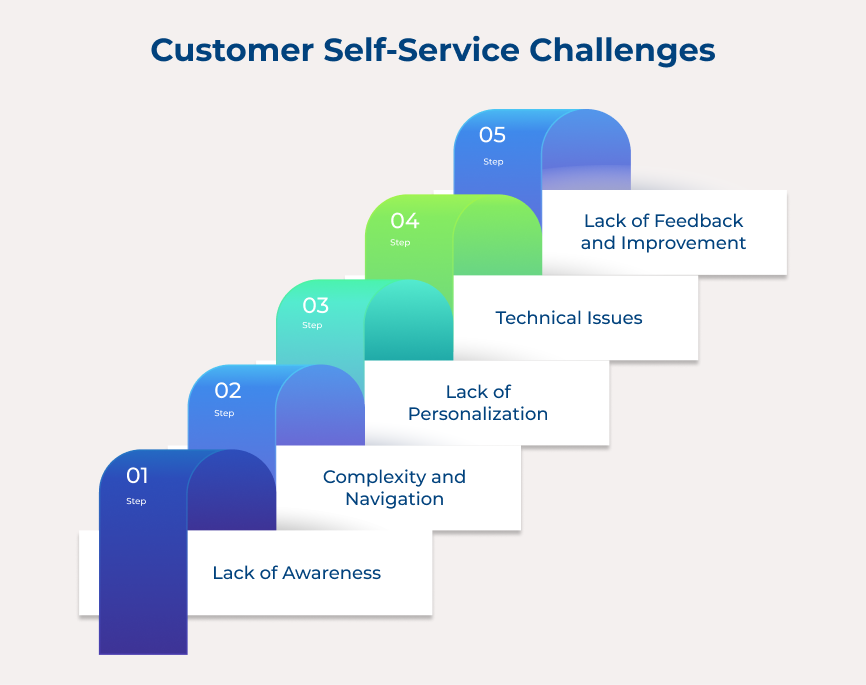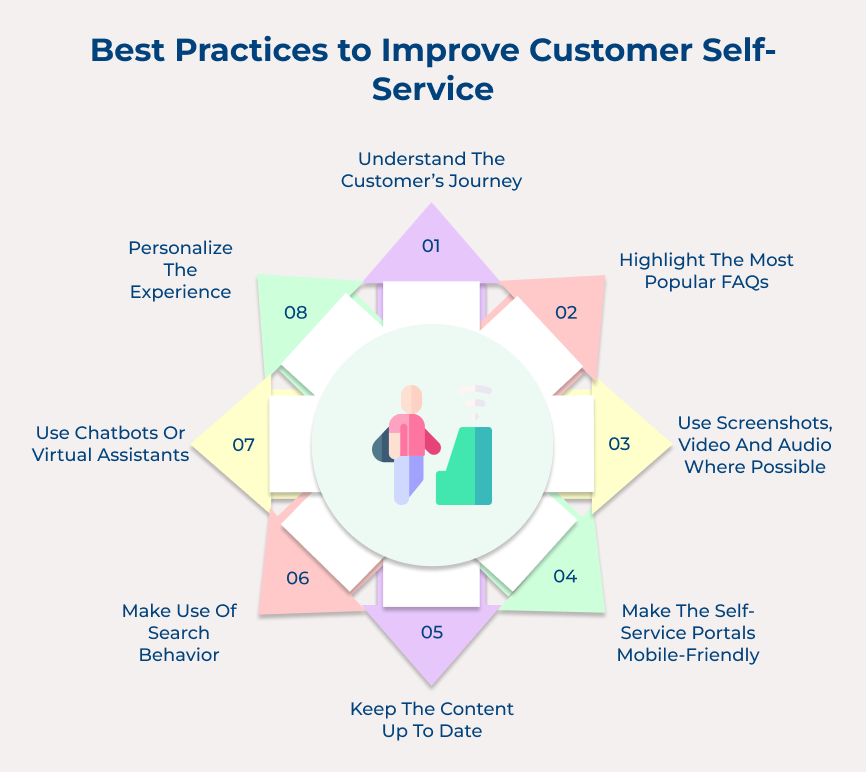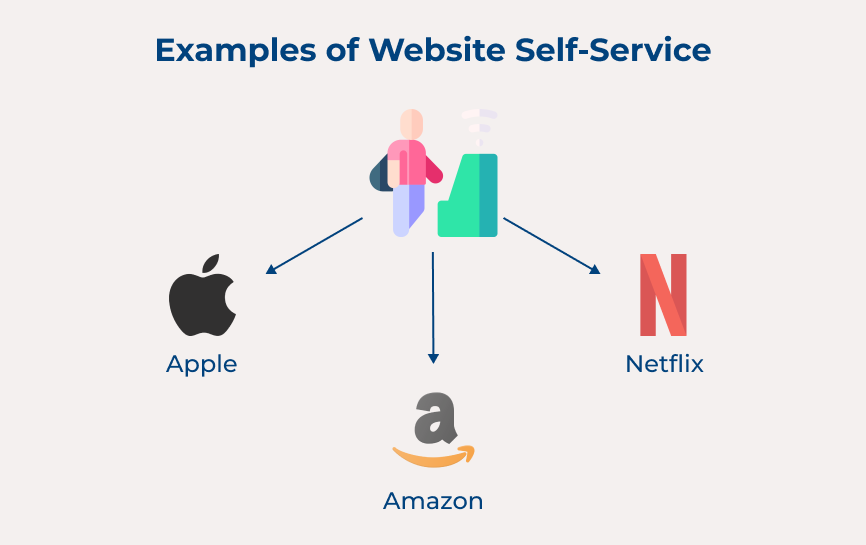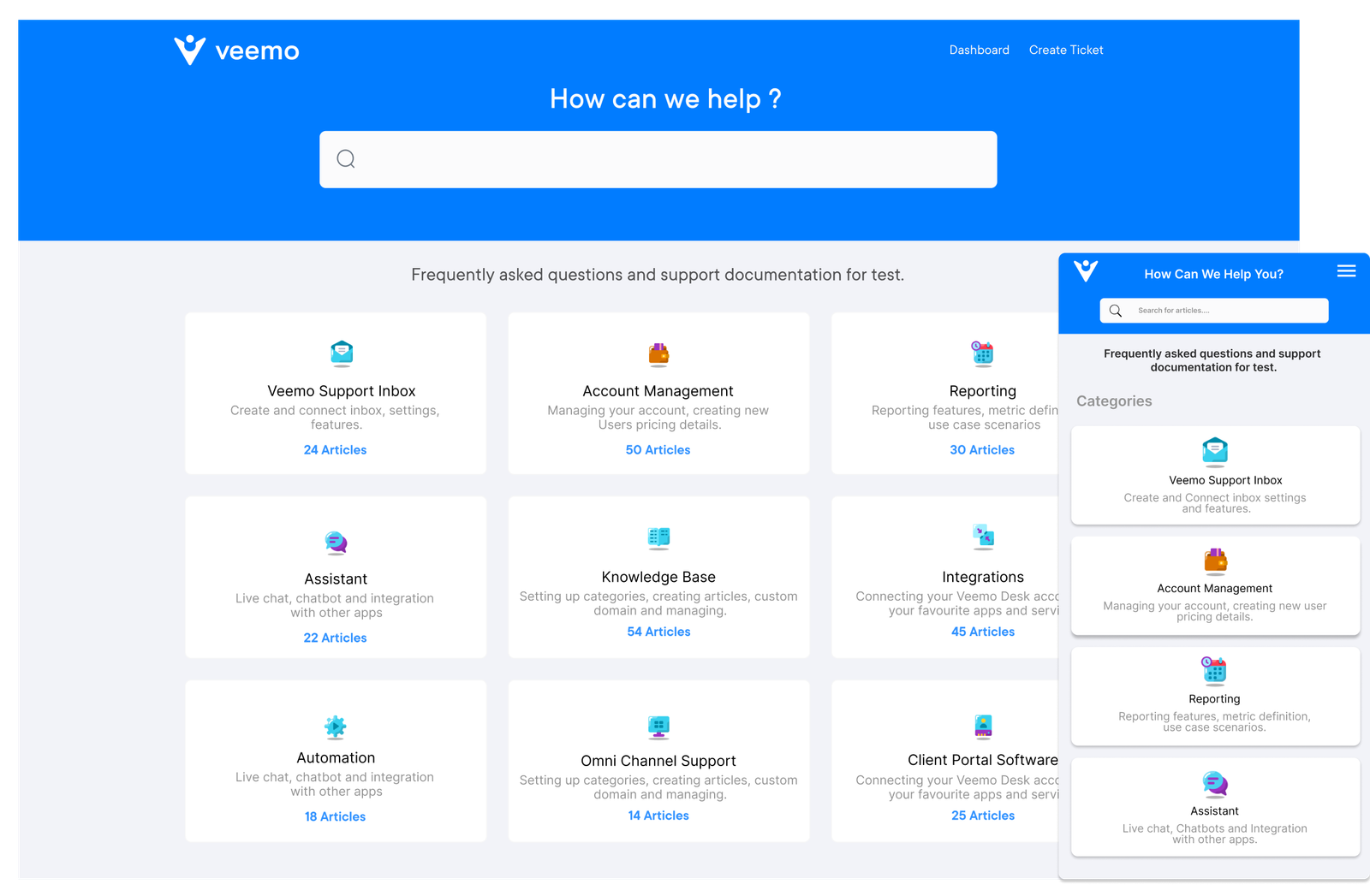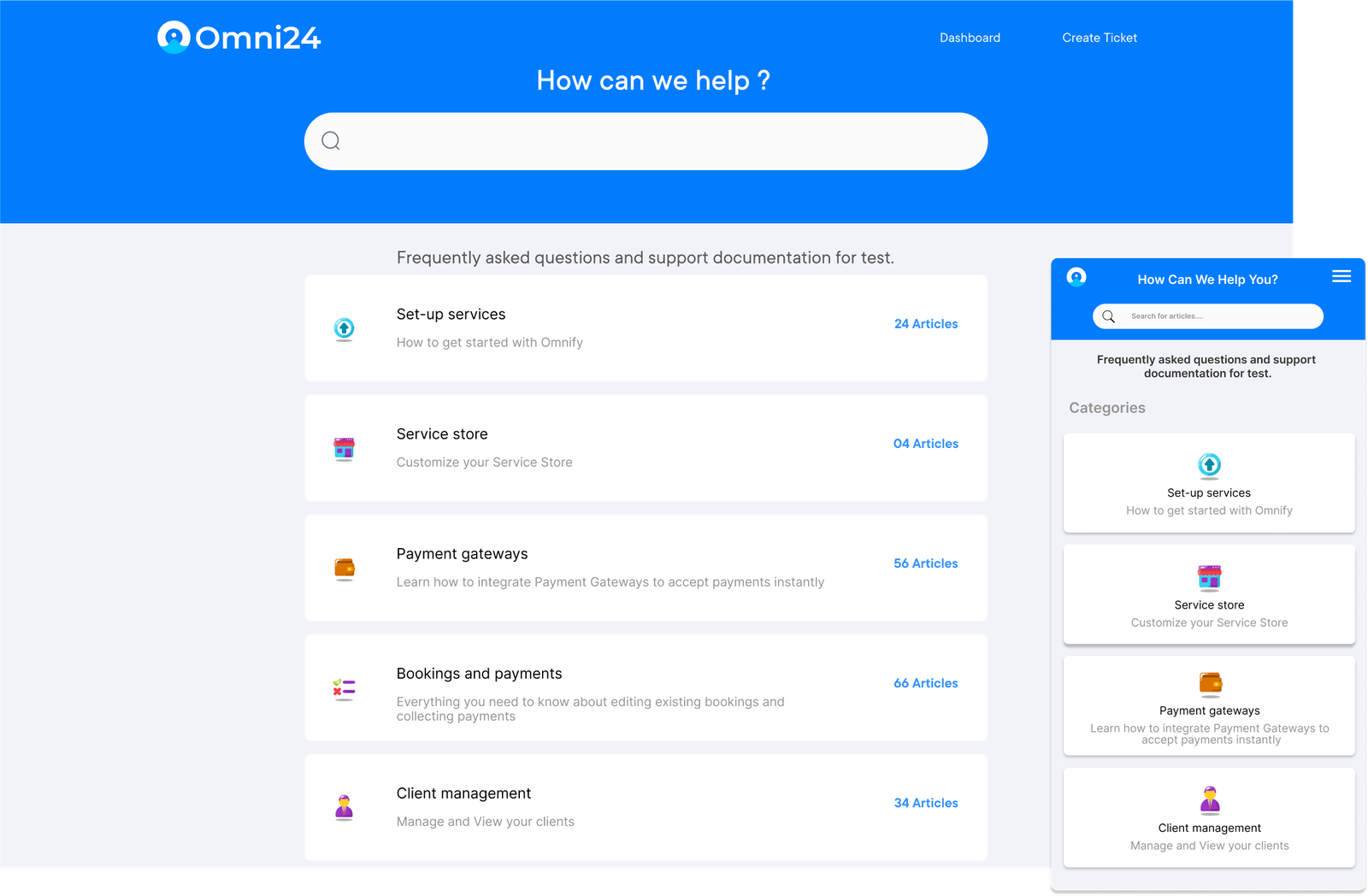1. Understand the Customer’s Journey
Understanding the customer’s journey is crucial when it comes to improving customer self-service the right way. Businesses can anticipate customer needs and offer timely solutions by understanding their journey. One of the best practices to improve client self-service effectively is to map out the customer journey touchpoints.
The practice includes tracking customer interactions from brand discovery to post-purchase. Mapping out the touchpoints can help identify where customer self-support can be most beneficial.
Pro tips:
- Conducting customer surveys to gather feedback on touchpoints
- Implementing a knowledge base with FAQs and tutorials
- Offering live chat support for real-time assistance
2. Highlight the Most Popular FAQs
Improving customer self-support through FAQs is a crucial aspect of providing efficient support to customers. Highlighting the most popular FAQs can streamline the customer service process. It empowers customers to find solutions to their queries on their own.
Different types of FAQs can address various customer needs, such as product information, troubleshooting tips, or billing inquiries. Let’s assume an e-commerce website may have FAQs related to shipping policies, return procedures and payment methods.
Pro tips:
- Use data analytics to identify the most common customer questions and prioritize them in the FAQs.
- Regularly update the FAQs to ensure they reflect the latest information and address current customer concerns.
- Ensure that FAQs are prominently displayed on the website and have a user-friendly search function. It can help customers quickly find the information they need.
3. Use Screenshots, Video and Audio Where Possible
Customer self-support has become a crucial aspect of customer support. Enhancing self-service can boost customer satisfaction and lighten the support team’s load. One effective method to enhance client self-service is by offering clear instructions using screenshots, videos and audio.
Let’s consider a software company that could provide a video tutorial for platform navigation or an audio guide for account setup. The resources can empower customers to find solutions to their problems independently.
How to implement:
- Create step-by-step guides with screenshots to walk customers through common tasks or troubleshooting steps.
- Utilize video tutorials to demonstrate complex processes or features in an easy-to-follow format.
- Offer audio guides for customers who prefer listening over reading or watching videos.
4. Make the Self-Service Portals Mobile-Friendly
Mobile-friendly self-service portals are essential as customers increasingly use mobile devices for information and support. Optimizing the self-service portals for mobile users can help in a seamless and user-friendly experience. It also caters to the needs of a growing mobile audience.
Let’s take an example of a mobile-friendly self-service portal. They should have a responsive design that adjusts to different screen sizes. It becomes easy for customers to navigate and access information on their smartphones or tablets.
How to implement:
- When creating or updating the self-service portal, prioritize mobile design to ensure a seamless experience for mobile users.
- Optimize the portal’s layout and navigation to make it easy for customers to find the information they need quickly on their mobile devices.
- Regularly test the portal on different mobile devices and gather feedback from users to identify areas for improvement.
5. Keep the Content Up to Date
Keeping the content up-to-date is crucial in ensuring that customers have the most accurate and relevant information at their fingertips. The best practice involves regularly reviewing the content to reflect any changes in the offerings or industry trends. Doing so can enhance the user experience and increase customer satisfaction.
One example of the importance of keeping content up-to-date is in the case of a software company. They fail to update their FAQ section to address any new changes in the software. The customers may become frustrated and seek assistance elsewhere.
How to implement:
- Audit the content regularly to identify any outdated information and make necessary updates.
- Utilize analytics to track user engagement with different pieces of content and prioritize updates based on user behavior.
- Encourage customer feedback and incorporate it into the content strategy to address any issues or gaps in information promptly.
6. Make Use of Search Behavior
When it comes to improving customer self-service, one of the best practices to consider is making use of search behavior. Analyzing how customers search for information, products or services can tailor the self-service options to better meet customers’ needs.
Let’s consider a company may notice that a significant number of customers are searching for information about their return policy. Placing the information prominently on their website or self-service portal can proactively decrease customer inquiries. It will help improve the overall customer experience.
How to implement:
- Conducting keyword research to understand what terms customers are using to search for information relevant to the business.
- Optimizing the website or self-service portal to ensure that the information is easily accessible and searchable.
- Monitoring search behavior data regularly to identify trends and opportunities for improvement in the self-service options.
7. Use Chatbots or Virtual Assistants
Chatbots and virtual assistants are becoming increasingly popular tools for improving customer self-support. The AI-powered tools are designed to interact with customers conversationally. It provides quick and accurate responses to their queries. 71% of individuals actively seek products through bot interactions.
An example of utilizing chatbots or virtual assistants is a software company adding a chatbot for customer technical issue troubleshooting. It reduces the number of support tickets submitted and improves customer satisfaction by providing instant solutions.
How to implement:
- Design a chatbot or virtual assistant that is user-friendly and easily accessible on the website or app.
- Train the AI tool to understand and respond to common customer inquiries accurately.
- Regularly monitor the performance of the chatbot or virtual assistant to make necessary improvements to enhance the customer experience.
4 Examples of Website Self-Service
Check out the powerful examples of website self-service that are reshaping customer interactions and driving convenience to new heights.






